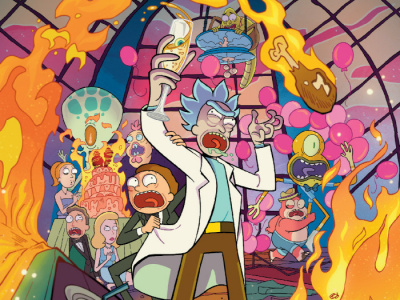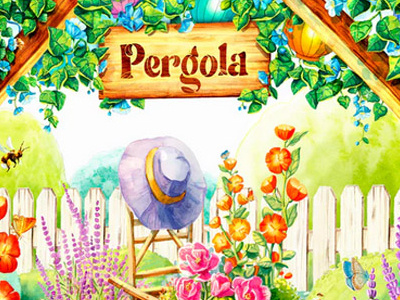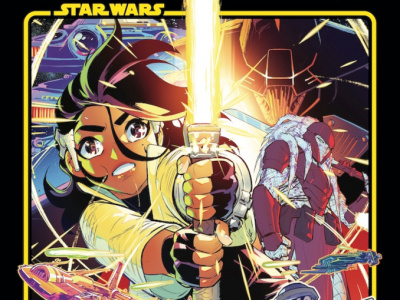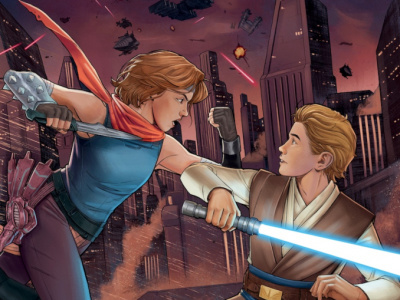We talked to Image Publisher Erik Larsen about Image's use of variant covers, and how he fells about their use. Larsen told us that he is going to discourage the use of variant covers at his company, but that ultimately, creators rule.
This interview is one of four interviews with executives from the top comic companies in which we explore the questions around the recent use of variant covers as a marketing technique. We lay out the landscape in 'Variant Covers--Are They Back?' The other three interviews are: 'Variant Covers -- Marvel's Gui Karyo,' 'Variant Covers -- DC's Bob Wayne,' and 'Variant Cover -- Dark Horse's Jeff Macey.'
Could you talk about what Image Central or the studios are doing with regard to variant covers. For example, are they being used for second printings? Is that uniform?
In a nutty outfit like this, there can be nothing uniform. All of our books are creator-owned and it all comes down to the individuals and how they want to deal with things. Some people think alternate covers are the cat's meow, other people think that they're not. I'm one of those who doesn't really think it's something people should be doing a whole hell of a lot of. I'm trying to discourage that sort of thing. I know there are people who feel that it's a way of getting people to pay attention to what they're up to. They'll use it when they can. There are some books we put out, the guys go, 'Okay, every time I do an issue, there's going to be two different covers to choose from.' It's their call. It's not something I'm going to ride people about and say, 'No, no, no, you can't do that.'
Are those generally ordered as separate covers, or shipped in a mix, or both?
Again, it's the creator's call. Sometimes it's one and sometimes it's the other. Sometimes it's a fifty/fifty split and sometimes you can order them separately. They do that on Frankenstein Mobster. You can order them separately. There's two different numbers for the two different covers. I'm assuming that's why.
There are good reasons and bad for doing it. If you say one out of five covers is going to be a cover by some hot shot and you want to increase your sales, that's a way of doing it. The stores will go, 'Well we want to get at least one of these covers in, so we're going to have to order more copies of this book.'
It's a manipulative way of doing business. It's not something I would encourage people to do. This isn't the early nineties. It's trying to foster the whole collectors' mentality thing. I don't know that there are that many real investors out there, or that that sort of thing should be encouraged. People ought to concentrate more on making sure that the books themselves are of decent quality.
Do you see any trends in terms of greater or less use of those kinds of techniques?
I would expect there to be less because I'm going to be leaning on people to knock it off.
At Image, over the last six months, do you think there's been more of it or less of it?
I don't know. I've been in this position for a couple months. I haven't seen a lot of it in the short period of time I've been here. I know there are one or two books where that has gone on. It's not nearly what it had been. There was one point where it seemed every other book had some kind of crazy cover scheme going on.
When was that?
In the nineties. In the mid-nineties things got kind of out of control. There was this big boom in '92, '93, the group of us had left Marvel. More people were funneling out of there, it made a very strong effort to try and compete and one of the ways of competing was to do a lot of variant covers, goofy covers, anything we thought might get some attention. It helped in the long run.
Do you feel the same about changing the cover on a second printing, or do you feel that's a more appropriate use?
There's not much in the way of second printings.
I think it's okay. It's a fairly visible way of letting people know it isn't the first printing of the book without having to crack the comic open. It's still somewhat cheesy, because you're getting people to buy another comic just so they can have that cover. If you've got the first printing, there really shouldn't be a reason for you to go out and buy a second printing. But if there's a different cover on it, you might very well feel compelled to do that.
Sounds like you're suggesting that the best use of the consumer's money is to buy a broad variety of material, rather than additional copies of the same thing.







